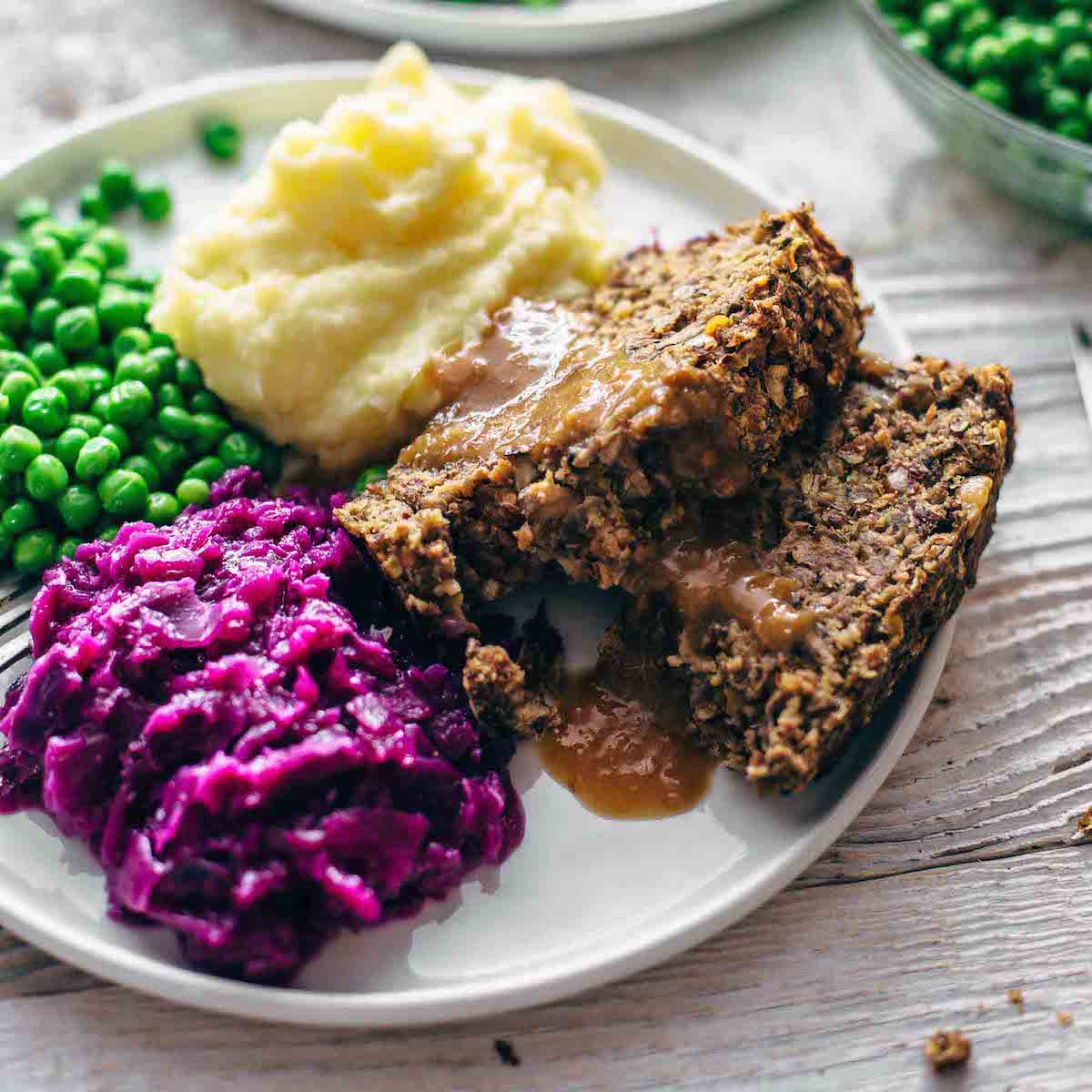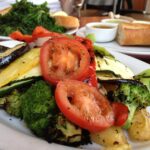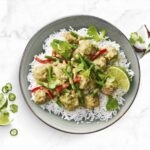Unleash your culinary creativity and discover the surprisingly satisfying world of vegan meatloaf! This isn’t your grandma’s meatloaf—we’re talking richly flavored, intensely textured, and undeniably delicious plant-based comfort food. Forget dry, crumbly disappointments; this guide unveils the secrets to crafting a vegan meatloaf so succulent and flavorful, even the most ardent meat-lover will be clamoring for seconds. Prepare to embark on a flavorful journey, transforming humble ingredients into a masterpiece of vegan cuisine.
From selecting the perfect blend of plant-based “meats”—lentils, mushrooms, walnuts, or tofu—to mastering the art of creating a mouthwatering glaze, we’ll cover every step. We’ll explore diverse flavor profiles, from classic Italian herbs to smoky BBQ, ensuring there’s a vegan meatloaf to tantalize every palate. Learn the techniques for achieving a perfectly moist and tender interior, and discover the best cooking methods to bring out the rich, savory depth of your creation. Get ready to redefine your expectations of vegan comfort food.
Ingredient Selection & Substitutions

Crafting a vegan meatloaf that rivals its meaty counterpart hinges on thoughtful ingredient selection. The right combination of textures and flavors will create a satisfyingly moist and flavorful loaf. Understanding the role of each ingredient is crucial for success, and knowing suitable substitutes allows for flexibility and creativity in the kitchen.
Vegan Ground “Meat” Options
The foundation of any meatloaf, vegan or otherwise, is the “meat” itself. Several excellent plant-based options exist, each offering a unique texture and flavor profile. Lentils provide a hearty, slightly earthy base, while mushrooms lend a savory umami depth. Walnuts contribute a rich, nutty flavor and satisfying chew, and tofu offers a blank canvas that readily absorbs other flavors.
- Lentils: Brown or green lentils work best, offering a firm texture that holds its shape well. Their mild, earthy flavor complements many other ingredients. Think of a lentil-based meatloaf as a robust, rustic option.
- Mushrooms: Finely chopped mushrooms, particularly cremini or portobello, add a deep, savory umami flavor and a tender, slightly spongy texture. They’re excellent at absorbing other flavors and create a moist loaf.
- Walnuts: Chopped walnuts provide a delightful textural contrast, offering a pleasant crunch and a rich, nutty flavor. They add a layer of complexity and satisfying chewiness.
- Tofu: Firm or extra-firm tofu, crumbled or finely processed, acts as a neutral base, readily absorbing the flavors of other ingredients. It contributes a soft, tender texture. Think of tofu as a versatile building block for creating your desired flavor profile.
Essential Ingredients and Substitutions
Beyond the base, several other ingredients play vital roles in achieving a moist and flavorful vegan meatloaf.
| Ingredient | Role | Suitable Substitutions | Impact on Texture/Flavor |
|---|---|---|---|
| Breadcrumbs | Binder, adds texture | Crushed crackers, oats, cooked quinoa | Crackers add saltiness; oats add a slightly nutty flavor and a more delicate crumb; quinoa offers a slightly more dense texture. |
| Onion | Flavor, moisture | Shallots, leeks | Shallots provide a milder, sweeter flavor; leeks add a subtle oniony flavor with a slightly softer texture. |
| Garlic | Flavor | Garlic powder | Garlic powder offers a more concentrated flavor, but fresh garlic provides a more nuanced taste and aroma. |
| Tomato Paste/Ketchup | Flavor, moisture, binding agent | Tomato sauce, BBQ sauce | Tomato sauce adds more liquid, altering the loaf’s consistency; BBQ sauce introduces a smoky sweetness. |
| Soy Sauce/Tamari | Umami, saltiness | Liquid aminos, coconut aminos | Liquid aminos provide a similar umami flavor; coconut aminos offer a slightly sweeter, less salty taste. |
| Worcestershire Sauce (Vegan) | Umami, savory depth | Mushroom broth, soy sauce reduction | Mushroom broth adds earthy notes; a soy sauce reduction concentrates the umami flavor. |
The Role of Binding Agents
The choice of binding agent significantly impacts the meatloaf’s texture. Breadcrumbs are a classic choice, providing structure and moisture. However, oats or crushed crackers offer viable alternatives, each contributing a slightly different flavor and texture. The binding agent’s ability to absorb moisture and hold the loaf together is paramount to success. A well-bound meatloaf maintains its shape during baking and offers a pleasing, cohesive bite.
Flavor Profile Development
Crafting a truly exceptional vegan meatloaf hinges on developing a rich and complex flavor profile. This goes beyond simply mimicking the taste of traditional meatloaf; it’s about creating a satisfying and deeply savory experience that stands on its own. We’ll achieve this through a careful selection of herbs, spices, and a flavorful glaze, building layers of umami and deliciousness.
Savory and Umami-Rich Vegan Meatloaf Recipe
This recipe focuses on building a deep, savory foundation using readily available ingredients. The combination of mushrooms, lentils, and nutritional yeast provides a hearty texture and a robust umami base. The herbs and spices add depth and complexity, creating a truly memorable meatloaf.
Ingredients:
1 cup cooked brown or green lentils, drained
1 cup finely chopped cremini mushrooms
1/2 cup finely chopped onion
1/2 cup nutritional yeast
1/4 cup breadcrumbs (panko recommended)
2 cloves garlic, minced
1 tablespoon soy sauce (or tamari for gluten-free)
1 teaspoon dried thyme
1 teaspoon dried oregano
1/2 teaspoon smoked paprika
1/4 teaspoon black pepper
1/4 cup vegetable broth
1 tablespoon olive oil
Instructions:
1. Sauté the onion and mushrooms in olive oil until softened. Add garlic and cook for another minute.
2. In a large bowl, combine the cooked lentils, sautéed vegetables, nutritional yeast, breadcrumbs, soy sauce, thyme, oregano, smoked paprika, and black pepper.
3. Gradually add the vegetable broth, mixing until a cohesive mixture forms.
4. Shape the mixture into a loaf and place it in a baking dish.
5. Bake at 375°F (190°C) for 45-50 minutes, or until heated through and slightly browned.
Flavorful Glaze Recipe
A delicious glaze elevates the meatloaf to the next level, adding a glossy sheen and a burst of flavor. This balsamic glaze is easy to prepare and complements the savory base perfectly.
Ingredients:
1/2 cup balsamic vinegar
1/4 cup maple syrup
1 tablespoon Dijon mustard
Instructions:
1. Combine all ingredients in a small saucepan.
2. Bring to a simmer over medium heat, stirring occasionally.
3. Reduce heat to low and simmer for 10-15 minutes, or until the glaze has thickened slightly.
4. Brush the glaze over the meatloaf during the last 15 minutes of baking.
Three Distinct Vegan Meatloaf Flavor Profiles
The beauty of vegan meatloaf lies in its adaptability. By simply altering the herbs, spices, and added ingredients, you can create a wide array of flavor profiles. Here are three distinct examples:
Italian-Style Vegan Meatloaf: Imagine a vibrant loaf, bursting with the aromas of sun-dried tomatoes, fresh basil, and a hint of garlic. The addition of sun-dried tomatoes adds a concentrated burst of sweetness and tang, complementing the savory base. A sprinkle of grated Parmesan-style vegan cheese adds a salty, umami note before baking.
BBQ Vegan Meatloaf: Picture a smoky, sweet, and tangy meatloaf, glazed with a rich BBQ sauce. The addition of liquid smoke to the meatloaf mixture adds depth and complexity, mimicking the smoky flavor of traditional BBQ. The glaze could be a store-bought BBQ sauce or a homemade version using smoked paprika, molasses, and apple cider vinegar.
Spicy Vegan Meatloaf: Envision a fiery meatloaf, packed with a kick of chili flakes, chipotle powder, and a touch of cumin. The addition of finely chopped jalapeños or serrano peppers adds a vibrant heat, while a hint of cumin adds an earthy depth. A drizzle of sriracha mayo or a cooling cilantro-lime crema could balance the heat.
Creating a vegan meatloaf that rivals—and perhaps even surpasses—its traditional counterpart is entirely achievable. By carefully selecting ingredients, mastering the art of flavor blending, and employing the right cooking techniques, you can craft a dish that’s both visually stunning and incredibly delicious. This guide has equipped you with the knowledge and inspiration to create a vegan meatloaf that’s not just a satisfying meal, but a culinary triumph. So gather your ingredients, unleash your inner chef, and prepare to amaze your friends and family with this unforgettable plant-based masterpiece. The journey from simple ingredients to a culinary masterpiece is yours to savor.
FAQ Summary
Can I freeze vegan meatloaf?
Yes! Cool the meatloaf completely before wrapping tightly in plastic wrap and then foil. Freeze for up to 3 months. Thaw overnight in the refrigerator before reheating.
What if my meatloaf is too dry?
Adding more liquid (vegetable broth or plant-based milk) to the mixture before baking can help. Next time, consider using a higher fat content ingredient like more mushrooms or adding a tablespoon of oil.
What are some good alternatives to breadcrumbs?
Crushed nuts (walnuts, pecans), oats, or even finely chopped vegetables can be used as substitutes for breadcrumbs, adding unique textures and flavors.
How can I make my vegan meatloaf gluten-free?
Ensure all your ingredients, including breadcrumbs or substitutes, are certified gluten-free. Gluten-free breadcrumbs are readily available in most supermarkets.


